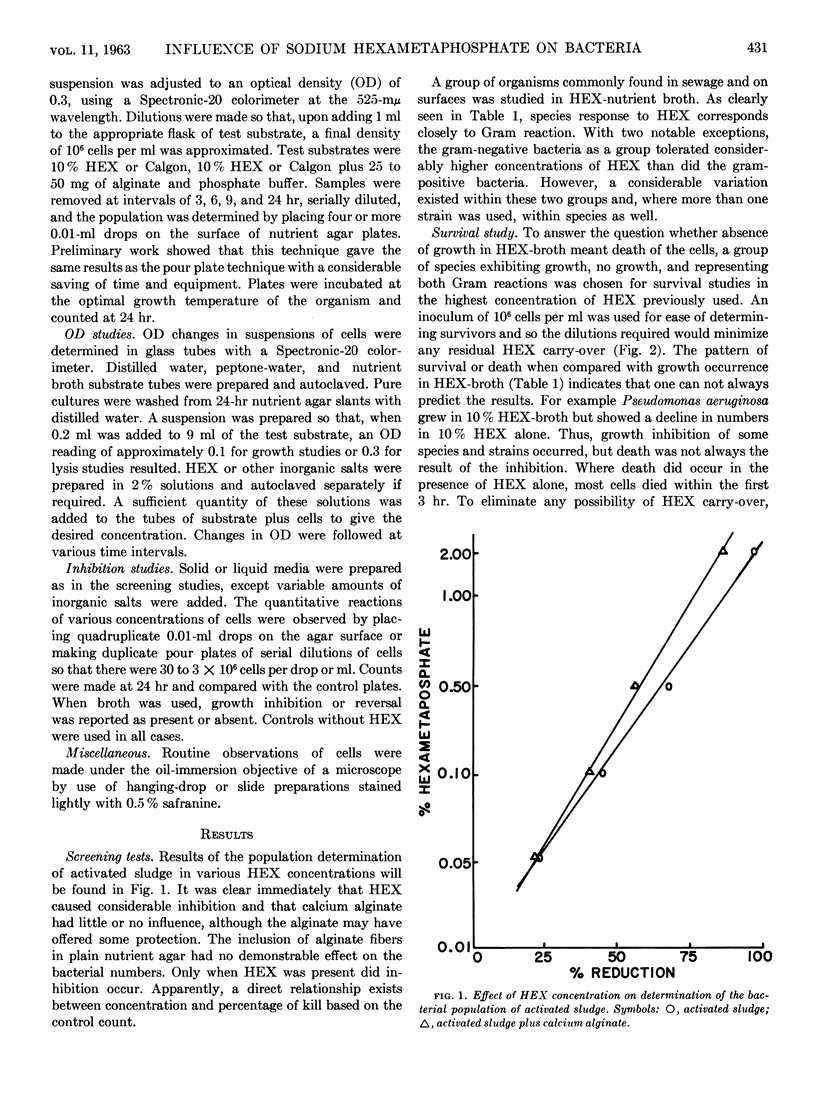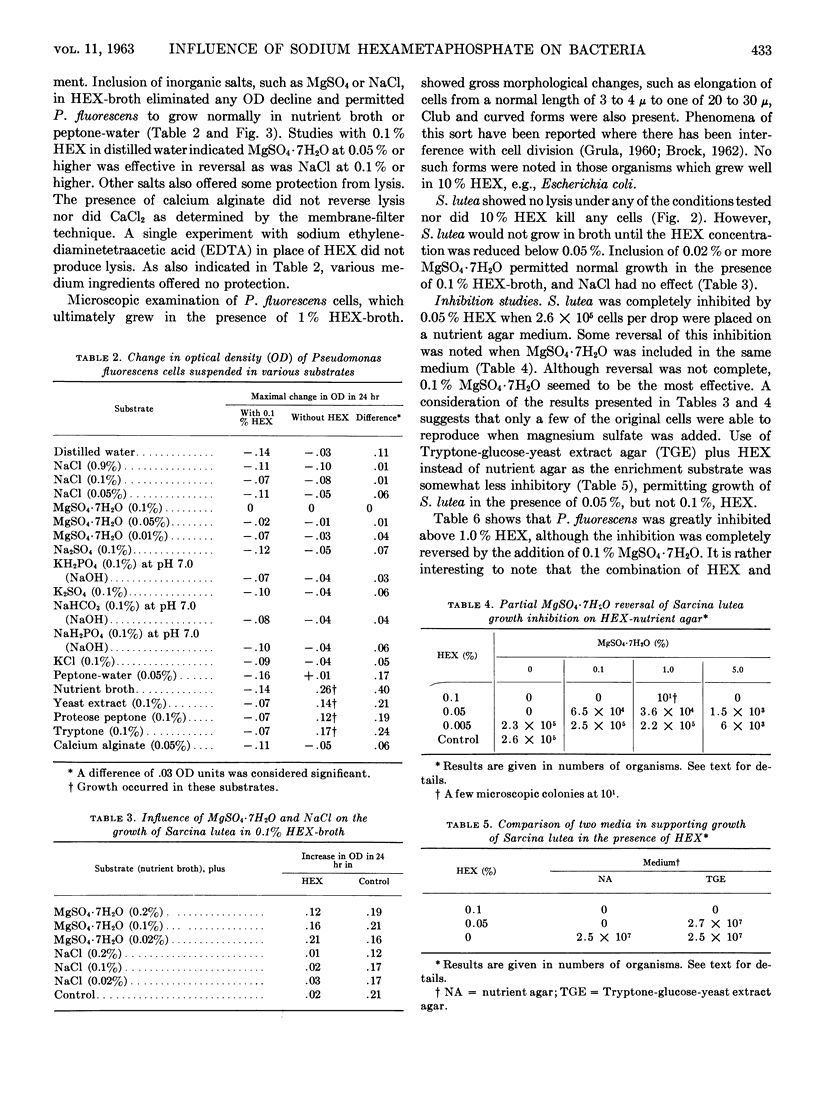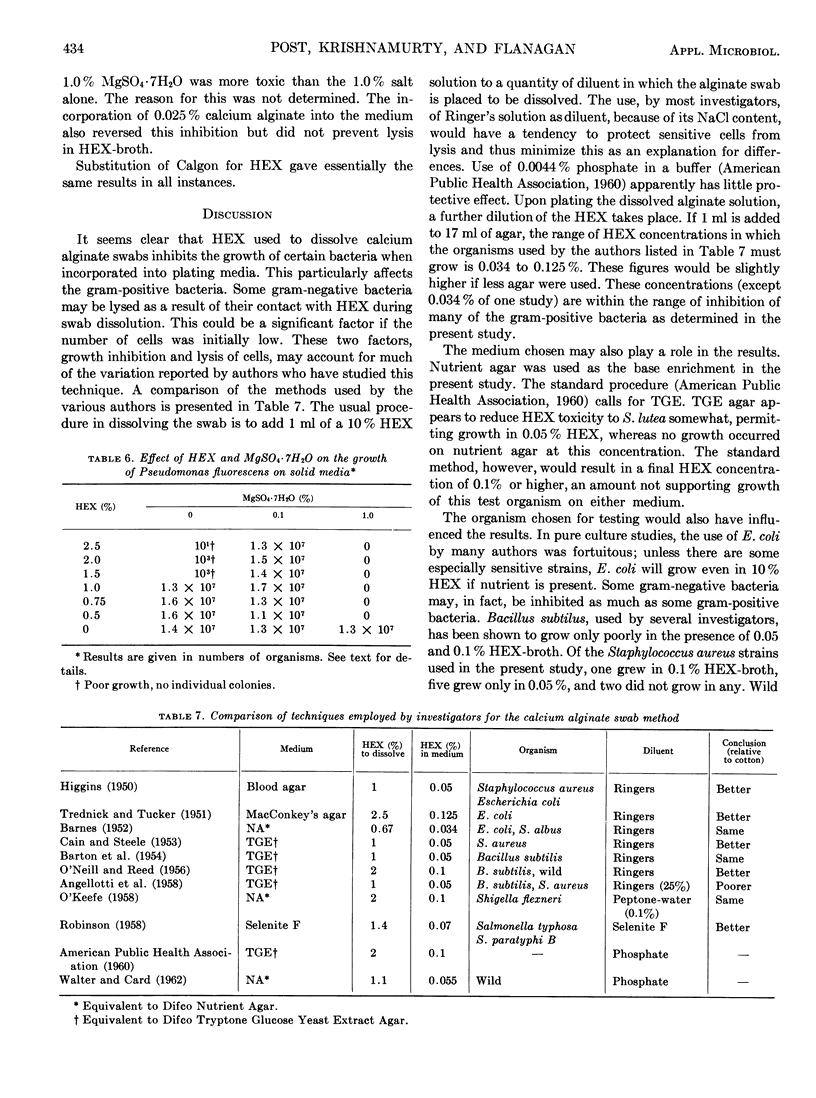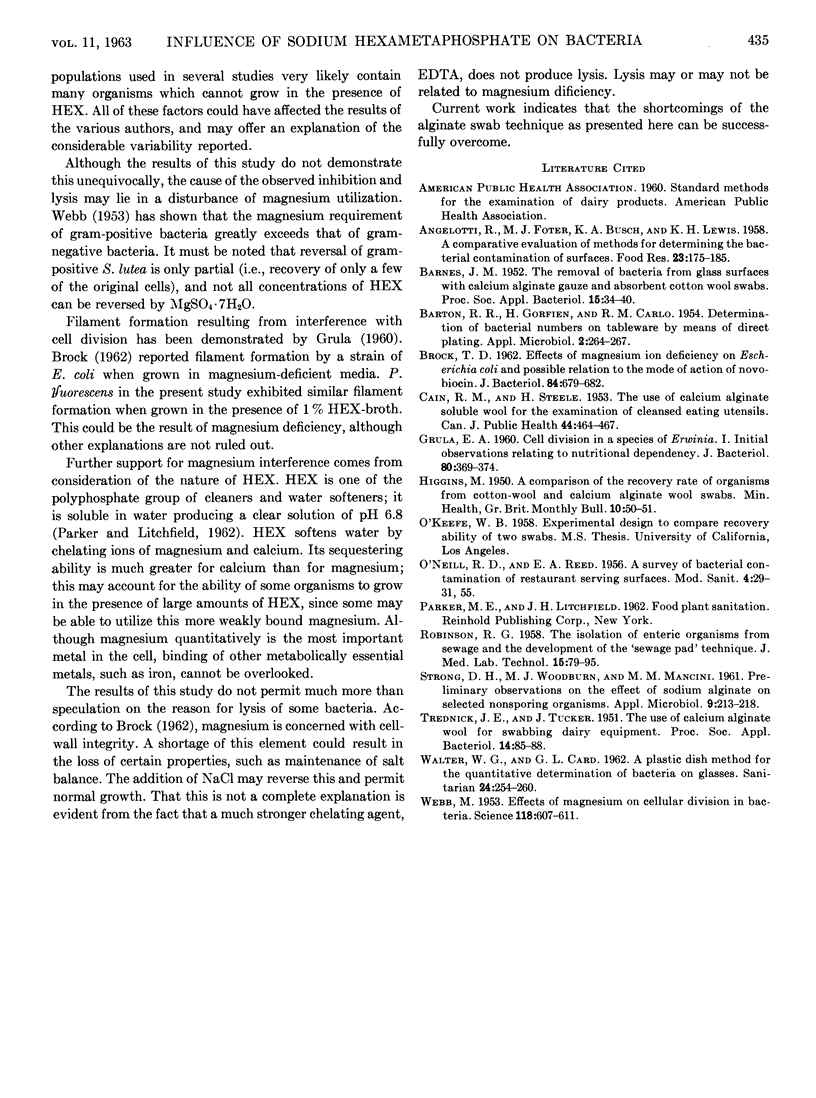Abstract
Sodium hexametaphosphate (HEX), the solvent of calcium alginate wool used in swabbing inanimate surfaces was studied relative to its effect on various bacterial populations, both pure cultures and wild. It was found that bacteria in wild populations were greatly inhibited, and that a percentage reduction of count was directly related to concentration of HEX. Most gram-positive bacteria were prevented from growing on a medium containing 0.1% HEX. This, or a higher concentration, occurred in the final medium when the method recommended in Standard Methods for the Examination of Dairy Products was followed. Growth of Sarcina lutea occurred on media with higher concentrations than that of inhibition (0.05%), if MgSO4·7H2O was incorporated in the medium. Gram-negative bacteria were capable of growing in higher concentrations, even up to 10% HEX. A large percentage of the cells of some strains (represented by Pseudomonas fluorescens) were lysed on contact with HEX. Lysis could be prevented by the addition of NaCl or MgSO4·7H2O. The evidence presented suggests that HEX, a phosphate-glass water-softening sequestrant, interferes with divalent cation metabolism, notably magnesium ion, and possibly others, producing cell division inhibition and loss of cell-wall integrity. The mechanism of action was not elucidated.
Full text
PDF





Selected References
These references are in PubMed. This may not be the complete list of references from this article.
- BARTON R. R., GORFIEN H., CARLO R. M. Determination of bacterial numbers on tableware by means of direct plating. Appl Microbiol. 1954 Sep;2(5):264–267. doi: 10.1128/am.2.5.264-267.1954. [DOI] [PMC free article] [PubMed] [Google Scholar]
- BROCK T. D. Effects of magnesium ion deficiency on Escherichia coli and possible relation to the mode of action of novobiocin. J Bacteriol. 1962 Oct;84:679–682. doi: 10.1128/jb.84.4.679-682.1962. [DOI] [PMC free article] [PubMed] [Google Scholar]
- CAIN R. M., STEELE H. The use of calcium alginate soluble wool for the examination of cleansed eating utensils. Can J Public Health. 1953 Dec;44(12):464–467. [PubMed] [Google Scholar]
- GRULA E. A. Cell division in a species of Erwinia. I. Initial observations relating to nutritional dependency. J Bacteriol. 1960 Sep;80:369–374. [PMC free article] [PubMed] [Google Scholar]
- ROBINSON R. G. The isolation of enteric organisms from sewage and the development of the sewage pad technique. J Med Lab Technol. 1958 Apr;15(2):79–95. [PubMed] [Google Scholar]
- Strong D. H., Woodburn M. J., Mancini M. M. Preliminary Observations on the Effect of Sodium Alginate on Selected Nonsporing Organisms. Appl Microbiol. 1961 May;9(3):213–218. doi: 10.1128/am.9.3.213-218.1961. [DOI] [PMC free article] [PubMed] [Google Scholar]
- WEBB M. Effects of magnesium on cellular division in bacteria. Science. 1953 Nov 20;118(3073):607–611. doi: 10.1126/science.118.3073.607. [DOI] [PubMed] [Google Scholar]


